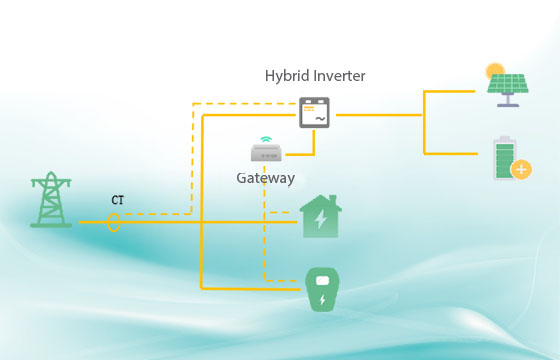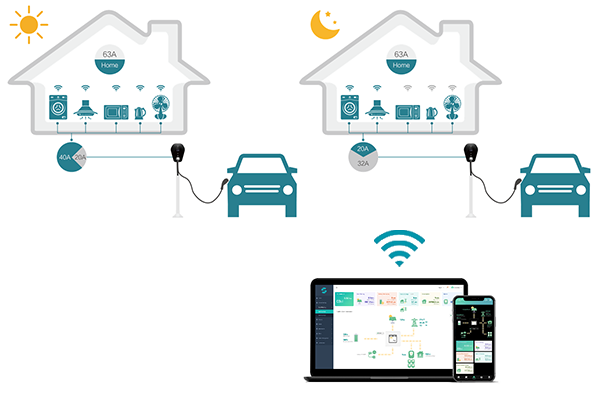Time:
Peak shaving and load shifting in EV charging are two important concepts that can have a significant impact on the way we consume and distribute energy. As electric vehicles are gaining more popularity and homeowners find it convenient to charge them at home, they are increasingly seeking ways to reduce their energy bills. In this article, we will explore the application of these two concepts in residential homes.
When there is a sudden surge in electricity demand, such as on a hot summer day when many people turn on their air conditioners, it can lead to overloading of the grid and power outages or blackouts.
Peak shaving reduces the load on the grid by quickly turning off equipment with high energy consumption or incorporating a local energy source to balance the peak in demand.

Today, more and more households have adopted solar panels and home battery storage units to store the renewable energy they've generated during the day.
If you have a smart EV charger, then it can compile the use of this stored energy with the electricity from the grid while you charge your car during peak hours.

Electricity consumption is often referred to as "load", and when there is a lot of consumption there is a higher "demand" on the electricity grid.
Load shifting involves shifting the timing of energy consumption to balance the electricity supply and demand on the grid.
Through load shifting, we can ensure that the electricity demand of EV charging is distributed more evenly throughout the day, helping to reduce peak demand and avoid grid congestion.
Homeowners, on the other hand, can schedule tasks like EV charging and appliance use for more cost-efficient hours.
One way to achieve load shifting is by implementing smart charging systems that communicate with the grid and adjust the charging rate of an EV based on the overall demand for electricity. Smart charging systems can prioritize EV charging based on the time of day or the available grid capacity, ensuring that charging occurs during low-demand periods or when renewable energy generation is at its highest.
Grasen's smart AC EV charger and its accompanying smart app enable homeowners to easily schedule their charging sessions during low electricity rate periods. This smart charging solution empowers homeowners to maximize their cost savings while efficiently managing their EV charging needs.
With peak shaving, you can add a local energy storage source to reduce the grid load. This enables you to keep using all high-demanding equipment while maintaining low costs.
Load shifting involves transferring a portion of the electrical load to a more cost-effective time, without altering your daily energy consumption.
A related smart charging feature, which often gets confused and conflated with peak shaving and load shifting, is dynamic load balancing. This smart charging feature automatically distributes the available capacity between different appliances and can adjust it to changes in power load.
People easily get confused with dynamic load balancing, peak shaving, and load shifting. Its major function is to efficiently distribute the available capacity among different appliances and can adapt to changes in power load.

You may want to learn more about "Dynamic load balancing in EV charging".
Although these 3 concepts are distinct, they complement each other and can work well together to efficiently manage the energy usage of your electric car during charging.
Recommend for You
Submit Request